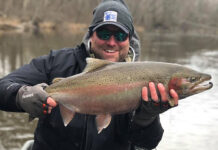Just because a resource is common and abundant today doesn’t mean that will always be the case.
When Europeans settled North America, for example, migratory flocks of passenger pigeons darkened the sky turning day into night.
The last one died in the Cincinnati Zoo in 1914. Inestimable herds of bison roamed the Great Plains. Today, a few remnant populations persist. And 200 years ago chestnut trees dominated the eastern deciduous forest. Today, chestnuts have been replaced by oaks.
Both members of the beech family (Fagaceae), chestnuts and oaks have been and are the lifeblood of eastern forests.
Bears, deer, squirrels, turkeys, wood ducks, mallards, chipmunks, deer mice, raccoons, ruffed grouse, woodpeckers, nuthatches, and blue jays share a favorite food – acorns.
Though oaks do not produce bumper crops of acorns every year, the great diversity of oak species reduces wildlife dependence on a single oak species.
Worldwide, approximately 400 species of oaks have been described. North America hosts 90 species. Approximately, a dozen species can be found locally. The most common local species include white, red, black, burr, scarlet, and pin oaks. Thanks to oak species diversity, there is almost always at least one species that produces a large fall crop of acorns.
In years when all oaks fail to produce much of a crop, wildlife suffers. They either eat other foods, move, or starve. Many people recognize oaks on sight by leaf shape – large, leathery, broad, and lobed. But the shape of oak leaves is as diverse as the variety of species. Many southeastern live oak species, for example, have long linear leaves with smooth margins.
Locally. chestnut and chinkapin oaks leaves lack lobes. Chestnut oak leaves are large and trimmed with rounded teeth. Chinkapin oak leaves are smaller and trimmed with jagged teeth.
Most North American oaks can be grouped into two groups. The red oak group has leaves with sharp tips on pointed lobes, longer pointed buds, and acorns that mature after their second growing season. Red oak acorns sprout the following spring. The white oak group has leaves with rounded lobes, short blunt buds, and acorns that mature in the fall after one growing season.
Furthermore, all oaks have multiple terminal buds and produce acorns – the familiar nuts with distinctive caps. Even some mammals can distinguish between the red and white oaks.
Gray squirrels, using senses of smell and/or taste, treat these two nuts differently. Red oak acorns lie on the forest floor through the winter and germinate in the spring. By scattering and storing nuts throughout the woods, gray squirrels not only insure a winter food supply, they also disperse acorns because they never recover them all.
White oak acorns, on the other hand, germinate shortly after they fall. By transferring energy from the nut to a rapidly growing taproot, many white oak acorns escape the jaws of hungry squirrels.
Gray squirrels counter with an ingenious learned behavior. When a squirrel collects a white oak acorn, it notches the shell with its incisors and removes the embryo. This makes the nut incapable of germinating, but it retains most of its nutritious meat for the squirrel.
Though acorn production of both red and white oak groups is predictable, it is not dependable. Some years produce bumper acorn crops, while other years the pickings can be slim. Biologists call this seed production strategy “predator satiation.”
Bumper crops produce enough acorns to satisfy all seed eaters with some left over so at least some nuts escape predation and eventually germinate. Well fed squirrels usually produce two litters.
Lean years, on the other hand, limit nut-eater populations. In years after a poor mast crop, for example, squirrels produce only one, if any, litters.
The importance of acorns as food to many birds and mammals suggests that acorns would be the ideal supplemental wildlife food. Anyone can collect acorns, but I’ve found one commercial source in Vermont — Native Nuts, Inc. (www.acorno.com; 802-363-1582). White oak, red oak, and burr oak acorns are available in bulk for animal food, crafts, and planting. Prices range from $2 to $5 per pound (60 to 80 acorns per pound) plus shipping.













I have thousands of acorns that have fallen in my yard I was looking to see if anybody was interested in buying them
Hi, you still have acorns to purchase? If you do, please let me know.
Yes, I am looking to buy acorns. How Much per pound?
I have 300 lbs.+ of white oak acorns I’m selling at $1.00 per pound.
Do you still have white oak acorns for sale?
You still have white oak acorns?what other acorns do you have?
I have white oak acorns 30 gallon container for $100 each or will sell five gallon buckets
Looking for acorns for my Forrest friends, is shipping available? Looking for 30 lbs, possibly more. I live in Illinois.
You can email me at macmactulio@yahoo.com. I have a bunch of them. Even 50 cents a pound i will sell it to you.
How are y’all picking up acorns to sell? Respond to Taky1@aol.com
My oak tree is producing a bumper crop this year. Just 5 minutes picking a 6 ft x 6 ft area, I gathered about 10 lbs.
Email me at: vistex@hotmail.com
Subject: White Oak Acorns for sale.